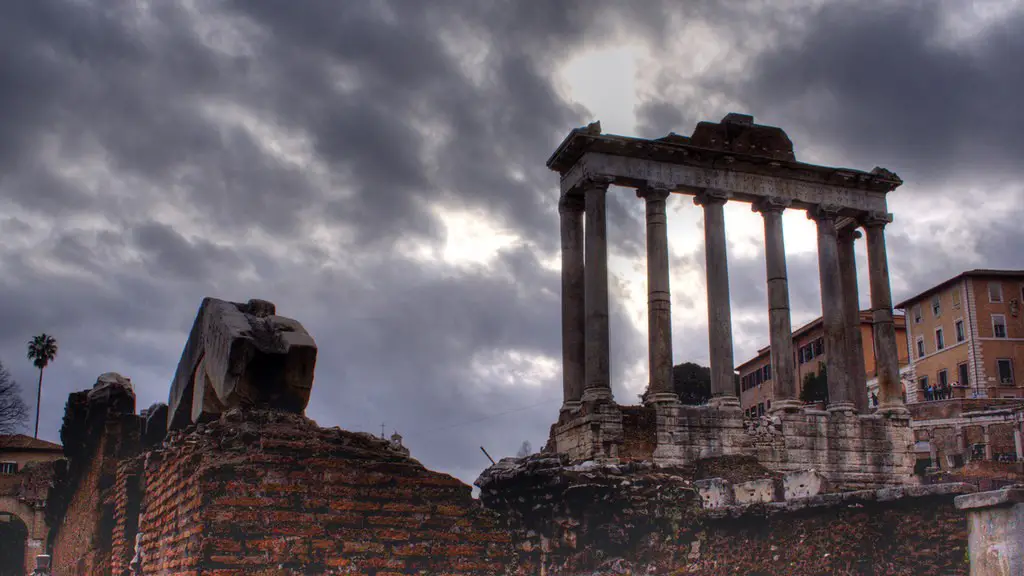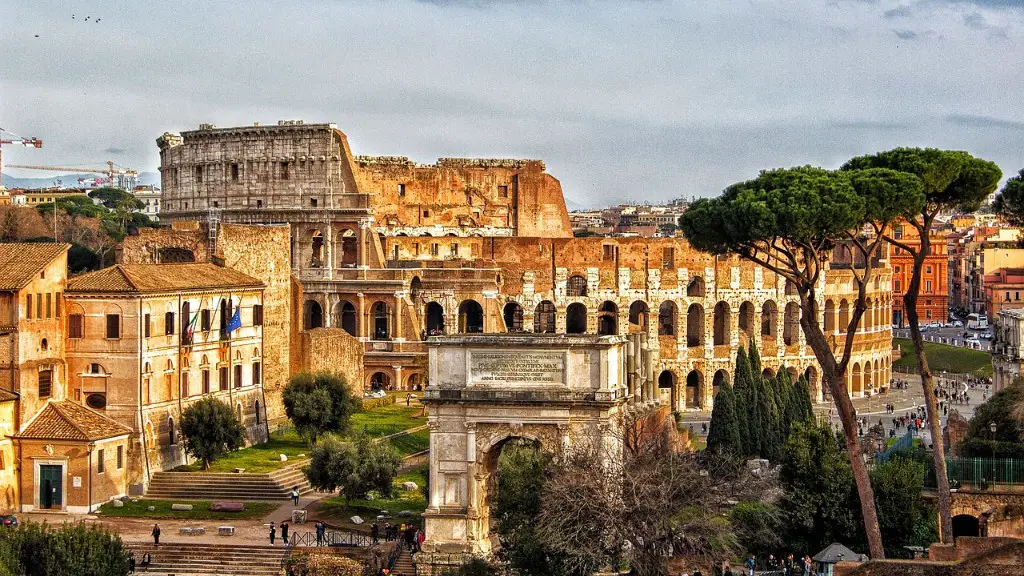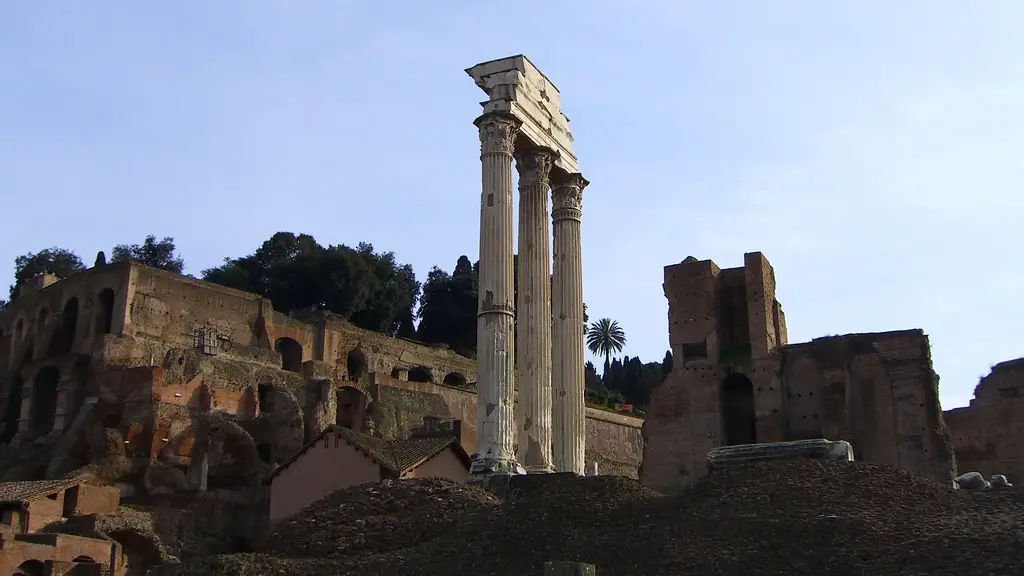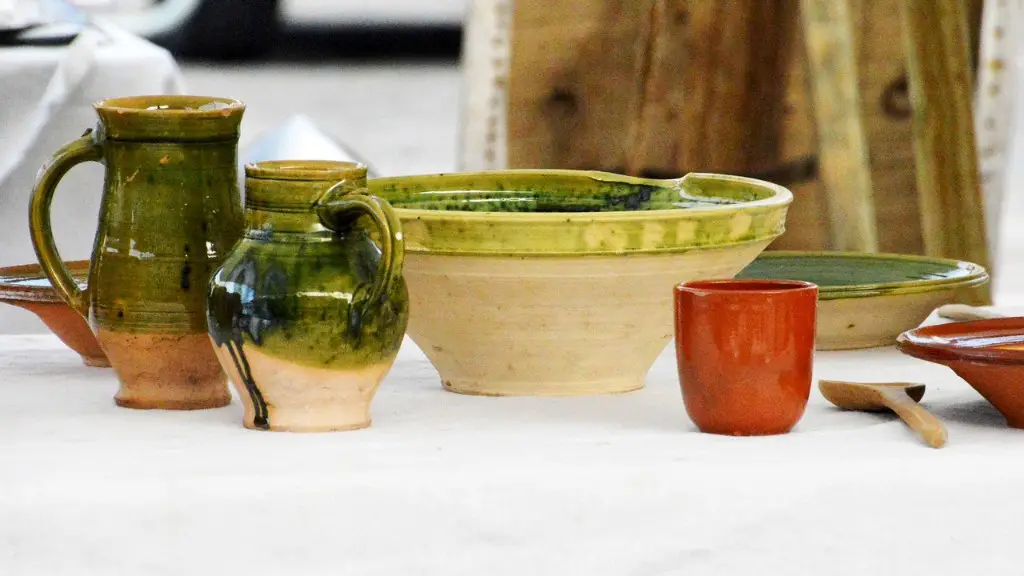Introduction
The diet of ancient Romans was a varied and nutritious one focused around vegetables and grains, with the occasional addition of meat or fish. Historically, it was considered to be a healthier and more balanced diet than much of modern Western cuisine, although it is more of a culinary curiosity today. This article will explore the diet of the ancient Romans in detail, looking at the types of food they ate, the dishes they prepared, and the culture and customs that shaped their eating habits.
A Typical Roman Meal
A typical Roman meal was a combination of grains, vegetables and the occasional piece of fish or meat. Bread was the most important part of the meal, and the most common type of grain eaten by the Romans was emmer, a primitive wheat which grew in abundance in the region. Other grains included barley, oats and millet, often cooked to make porridge or porridge-like dishes. Legumes, such as beans, lentils and peas, were also a part of the Roman diet and were cooked with grains to make a stew. Fruits and nuts were widely enjoyed, while the most common sources of meat were pork and mutton, though beef and chicken were also consumed. Fish, usually fresh, was a regular addition to the meal, and widely available in the Mediterranean area.
Eating Customs
The ancient Romans had very specific eating customs. For example, it was considered impolite to start eating before everyone was seated. Food was also eaten with the hands rather than with utensils, though knives and spoons were used to cut food. It was also customary for diners to recline on couches rather than sitting at tables.
The Romans were also mindful of proper table manners. For instance, it was considered bad form to start with salads or other starters before the main course, as well as to bring food from the table to one’s couch. It was also important to savour and enjoy the food, and to take small bites. Those who took large bites or ate in a rushed manner were seen as uncouth.
Preparation of Roman Dishes
Ancient Roman dishes typically used simple ingredients, which were easily available in the local markets, and were often flavoured with herbs, spices, and the occasional splash of oil or wine. Common ingredients included vegetables, dairy products, fish, and oil-based sauces. Meat was not a regular part of the Roman diet, and was generally regarded as a special-occasion food.
Vegetables were often boiled or stewed, and olive oil was used to season them. Other common cooking techniques included grilling, roasting, and frying. Grains were cooked to make porridge-like dishes, as well as bread. Cheese and milk were also commonly used and readily available, and both were eaten by themselves or as part of dishes.
Culinary Culture
The culinary culture of ancient Rome was heavily influenced by politics, religion and the availability of ingredients. For example, the dining customs of the Romans involved leisurely meals, relaxation and the enjoyment of good food, but under the rule of Caesar and his successors, grand feasts and lavish banquets were more often seen in the upper class. These feasts were typically accompanied by lavish entertainment and lots of wine drinking, as well as singing and reciting of poetry.
Religion also played an important role in the Roman diet. The Romans were devoted to divine worship and wanted to show respect to their gods. Thus, sacrificial animals were prepared, and the meat was eaten or given to the poor. On the other hand, there were also feasts held in honour of gods, accompanied by lavish banquets and plenty of wine.
Nutritional Benefits
The diet of the ancient Romans was a nutritious one, with a wide variety of healthy ingredients. It was high in fibre, vitamins and minerals, and low in fat and sugar, making it a beneficial and balanced diet. Grains provided much-needed carbohydrates and energy, while legumes and vegetables supplied a number of essential vitamins and minerals. Dairy products such as cheese and milk were also an important part of the diet, offering much-needed calcium for strong bones and teeth.
Overall, the diet was a healthy one focused on wholesome ingredients, and it was typical for ancient Romans to eat three meals a day. This regularity meant that hunger was rarely an issue, and provided the basis for physical activity, productivity and overall contentment. It was a far cry from much of the unhealthy Western diet seen today.
Practical Applications
Although the diet of the ancient Romans may seem foreign to modern tastes, its nutritional benefits can still be seen in practice today. There are a number of vegan, vegetarian and other healthy diets that have taken cues from the ancient Roman lifestyle, which emphasise a variety of plant-based ingredients, whole grains and other nutrient-rich foods. It is also possible to incorporate the occasional piece of meat or fish, as long as it is kept to a minimum.
Additionally, the emphasis on fresh, local and seasonal ingredients that was seen in the diet of the ancient Romans can still be seen today. Although modern supermarkets offer access to an array of ingredients from all over the globe, it is still possible to buy locally produced fruits and vegetables, as well as to support small-scale farming and take advantage of seasonal produce. It is also worth noting that the emphasis on leisurely meals and socialising with others is another ancient Roman tradition that still stands today.
Popularity
The diet of the ancient Romans was popular in its time, and it continues to be of great interest to many. Despite being affected by politics, religion and other social customs, its nutritional benefits, practical applications and traditional customs make it a fascinating topic worthy of exploration. Its popularity is also likely to continue into the future, as its combination of traditional recipes and modern ingredients can guide those looking to recreate not only the culinary culture of the past, but also foster healthier diets in the present day.
Conclusion
While the diet of the ancient Romans may seem unfamiliar to many of us, its benefits remain evident today. It was a nutritious and balanced diet that emphasised fresh, seasonal ingredients, and its practical applications can still be seen in many contemporary diets and customs. Its popularity is also likely to remain into the future as its combination of traditional recipes and modern ingredients continue to fascinate and inspire.




